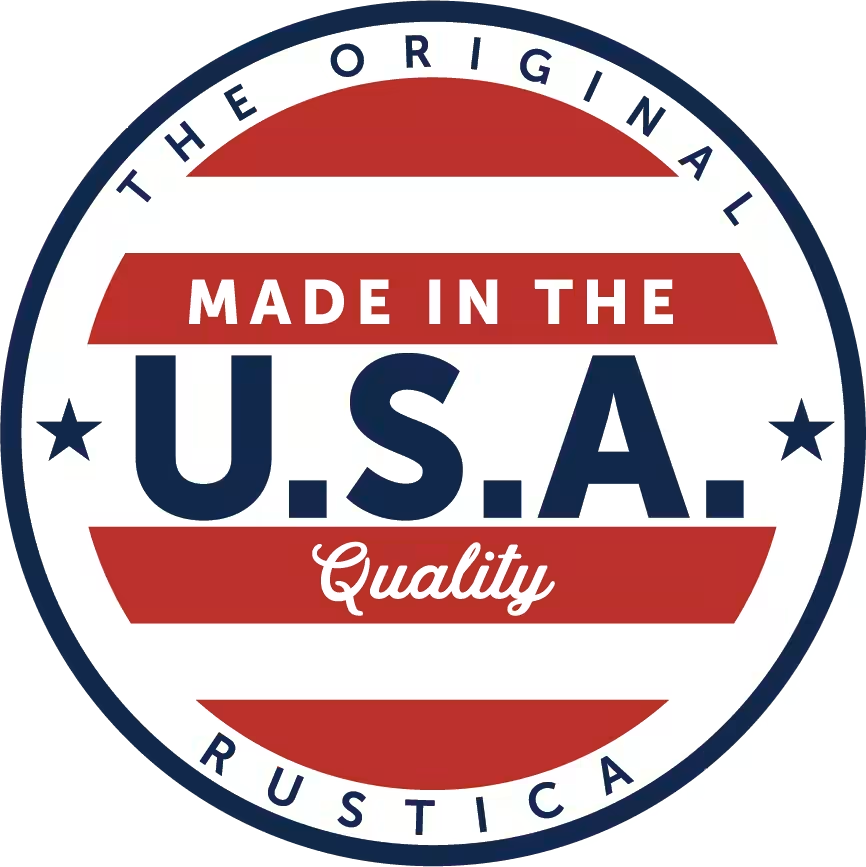A storm door is a worthy
investment, as it provides added protection, insulation, and more to the home. While there are many benefits to
having a storm door, there are some drawbacks. If you’re interested in a storm door, but unsure if it’s the best
fit for your home, you’ve come to the right place.
Pros and Cons of Storm Doors
Storm Door Pros
- Extra protection
- Improved Insulation
- Ventilation and Light
- Security
Storm Door Cons
- Hides Decorative Front Doors
- Requires Extra Maintenance
- Traps Heat
- Adds Complexity to Entrance
In order to understand the benefits and
drawbacks of a storm door, you need to know what it is, what it looks like, and the different types of storm
doors available. We’ll also discuss how a storm door differs from a screen door. Then you can confidently decide
whether a storm door is right for your home.
What is a Storm Door?
A storm door is an extra door installed in
front of the main door. It’s made of glass and metal (typically aluminum or stainless steel) and can vary in
design and appearance. There’s a small gap between the storm door and the main door so that the storm door
doesn’t touch the front door. The main purpose of a storm door is to protect
the entry door from weather damage, including rain, snow, and wind. This protection extends the life span of the
main door and prevents it from premature aging due to excess sun, extreme temperatures, and weather
exposure.
Storm Door Glass
Most storm doors feature a large glass
panel with a thin metal frame. Because the storm door is designed to protect the main door, the glass is
typically made of tempered
glass with a low e
glass coating. Tempered glass is a type of safety glass, which means that it is safer than regular annealed
glass.
Tempered
glass is much stronger, more heat resistant, and breaks differently than annealed glass. It is four times
stronger than regular glass, and has more impact resistance. This means it’s harder to break and is less likely
to shatter from normal wear and tear. For this reason, it is the standard glass type for storm
doors.
In addition
to the tempered glass, most storm doors have a low e glass coating to prevent sunlight from heating the gap
between the storm door and the main door. Low e glass, short for low emissivity glass, is a type of window glazing
created to improve the door glass or window’s insulating performance.
A special
coating is applied to the glass to minimize the amount of infrared and ultraviolet light that comes through
without minimizing the amount of natural light coming into the space. This coating is microscopically thin and
isn’t visible to the naked eye. As a transparent coating, it reflects heat away from the glass. This specialized
storm door glass coating is the top choice for energy efficiency and keeping the internal house temperature
steady.
Types of Storm
Doors
Storm doors
can vary in appearance and material. In general, there are three types of storm doors: full-view, mid-view, and
high-view. Full-view storm doors have a full glass panel. Some have two separated glass panels
divided by a metal rail. Others have a large, single glass panel that fills the entire door.
Full-view
storm doors have a ventilation option in the form of a retractable screen or an interchangeable full screen. The
retractable screen is found on storm doors that have two glass panels: the top glass panel slides down to bring
the retractable screen down. Storm doors with an interchangeable full screen usually have a full glass panel
that has to be removed and replaced with a screen. Mid-view storm doors are
three-quarters glass with a metal panel at the bottom of the door. These storm doors can also have retractable or
interchangeable screens.
Finally, there are high-view storm
doors that are half glass on the top and half metal on the bottom. These are the doors that
typically display beautiful metalwork, and can come in a variety of styles. They also have ventilation options,
depending on the design.
Pros and Cons of Storm Doors
Now that you know what a storm door is and
the different options available, it’s time to dive into why a storm door could benefit your home. We’ll also
cover the reasons why someone wouldn’t want a storm door. That way, you can evaluate the pros and cons and
decide if getting a storm door is the right choice for you.
Storm Door Pros
Extra
Protection
The main
purpose of a storm door—and its biggest benefit—is added protection for your entry door. A storm door prevents
moisture, harsh weather, and wind from directly hitting your main door. Whether your door is metal or wood, this
added protection will increase your entry door’s lifespan.
By contrast,
a wooden or metal door exposed to the elements will eventually wear down and show signs of age. This is
especially true for doors without an awning or porch. If you
have a high-quality exterior door exposed to the elements, you’ll want to preserve its appearance and structural
integrity. A storm door is a great solution.
Besides
protecting the front door, a storm door also protects the inside of your home from insects and rodents. A storm
door lets you open your entry door to welcome fresh air and natural light without letting in unwanted
critters.
While the
front door has been mentioned frequently, storm doors are an easy way to add protection to any of your exterior
doors, including back doors, patio doors, and
garage doors. A custom storm
door can even include a pet door, letting your pet come and go without leaving the main door open.
Improved
Insulation
Along
with an extra layer of protection, a storm door improves the overall energy efficiency of the home. If the glass
in a storm door is double or triple-paned and has a low e glass coating, it will provide an insulated layer for
your entry door.
The low e
glass coating will reflect heat away from the glass, helping it stabilize internal temperatures. During the
summer, it will reflect hot air away from the door, keeping the inside cool. During winter, it will reflect the
warm air inside back into the house.
Along with
the insulated glass, the air gap between the main door and the storm door also acts as an insulated layer.
This air gap will reduce heat transfer as long as both the storm door and entry door are
insulated.
Another way
a storm door improves the insulation and energy efficiency of a home is by preventing drafts. A fully sealed
storm door prevents drafts from reaching the entry door. And if the entry door is also fully sealed with weatherstripping,
the chances of air leakage is significantly reduced. Your home will remain draft-free, even when strong gusts of
wind are hitting your door.
These
factors can lower your energy bills. With a high-quality storm door, solid wood doors, and double-paned windows,
your home's energy efficiency increases significantly.
This means
your heating and cooling system won’t have to kick on as frequently because the internal temperatures are
stabilized. Not only will this help you save on energy bills each month, but it will also increase the lifespan
of your HVAC system.
Ventilation and
Light
One
significant benefit of a storm door is that it allows you to open your entry doors on warm days to let fresh air
and light flow into the space. The storm door remains closed to protect your home from unwanted pests, making it
a great fit for homes that need more light and ventilation. Most storm door styles offer ventilation
options, like a retractable or interchangeable screen. Plus, the screened portion of a storm door is typically
large, allowing plenty of fresh air flow into the space.
While there
are many front doors with glass windows, not many of them are full glass like storm doors. This means they don’t
let in as much natural light as a storm door does. So, when the front door is opened, a storm door will let in
abundant natural light. This is especially nice for dark foyers and entryways.
One added
benefit of storm doors is that when the main door is opened, they give you a clear view of the outside. This is
helpful for those who wish to keep an eye on kids or pets while they’re outside.
Security
A high-quality storm door adds an extra layer
of security to your home. Some storm doors are designed with their own locking mechanism, such as a lever lock
and deadbolt. With a locking storm door, your home is that much harder to break into.
Most thieves
target homes that are easy to enter. The more difficult you make it to break in, the less likely someone will
try. With a locking storm door, you’re alerting any would-be thieves that your home is not an easy target. In
this way, storm doors not only protect your home from the elements, but also from intruders.
While a
storm door is not considered a security
door, they do offer another level of security by simply making your home harder to break into. This is
important to consider if you live in a city or high-traffic area. Plus, high-view storm doors with metal
frameworks are even more imposing and harder to break into since they’re not full glass.
If security
is a concern, be sure to look for storm door styles that can lock. Not all storm doors on the market have a
locking mechanism in place, so be sure to look for ones that do before you buy.
Storm Door Cons
We’ve covered the reasons why a storm door will
benefit your home, so now let’s talk about the drawbacks of having a storm door.
Hides Decorative Front
Doors
If you have a
beautiful, luxury front
door, why would you want to hide it? A common concern with storm doors is that they can hide or detract
from the beauty of the entry door. This is especially true for homes with a high quality solid wood or metal front door.
Let’s say
you just spent time, money, and energy on designing a front door replacement. You’ve finally found the perfect front door,
and you’re thrilled with the results. Unfortunately, with a storm door, all of that work and money is partially
hidden from view. Is this something you’re okay with?
Stylish
front doors add to the overall aesthetic of the home. They also boost curb appeal, increase home value, and
impress your guests—benefits that matter to many homeowners. However, a storm door might impact these perks and
alter the home’s aesthetic.
If you’re in
love with how your front door looks, you may not want to cover it with a storm door. Of course, modern storm
doors can be designed to be sleek and stylish, but they’ll still take away from your colorful or decorative
front door.
Requires Extra
Maintenance
Homeowners
know that to prevent damage and preserve their door’s functionality, they need to regularly clean and maintain
their doors. Regular maintenance includes checking and lubricating
the hinges, handles, and locks to prevent sticking; checking the door and door frame for damage or
moisture; and cleaning and re-sealing the door’s surface (if necessary). This work should be done about once a
year for all the doors.
With storm
doors, you’re adding more doors to your list to maintain. For every exterior door they cover, that’s now two
doors to clean, check, and repair if necessary.
Because of
the glass, storm doors show dirt, dust, and smudges more readily than metal or wood doors. As such, they may
require more cleaning than other doors. If left uncleaned and unmaintained, storm doors can degrade at a faster
rate. Plus, they won’t look as nice or inviting, and may decrease your home’s curb appeal.
While
maintaining your storm doors may seem like a minor inconvenience, it’s still important think about. Are you
willing to put in the time, energy, and money to maintain your storm doors? If so, great! If not, you’ll want to
reconsider whether storm doors are right for your home.
Traps Heat
The biggest caution with storm doors is
to avoid placing them in spots that get more than a few hours of direct sunlight each day. In this scenario, the
direct sunlight could cause the air gap between the doors to heat up. Over time, this heat could damage your
main door and reduce your home’s energy efficiency.
That said, a
low e glass coating will significantly reduce heat transfer from the glass to the air space between the doors.
However, it won’t completely block the sun’s heat from warming this space if the glass is exposed to direct
sunlight for more than a few hours.
Now, if your
door is in an area that receives partial shade or is covered by an awning or porch ceiling, the sun hitting the
glass shouldn’t be a problem. If the exterior door receives more than a few hours of direct sunlight, then a
storm door may not be the best fit for that particular entryway.
Adds Complexity to
Entrance
Another
factor to consider is that a storm door will complicate your entryway a bit more. Rather than having one door to
open, you now have two. While this doesn’t seem like a big issue, it’s still important to consider, especially
for those with mobility issues.
For
instance, in order to enter the doorway, you’ll need to hold the storm door open while unlocking and opening the
main door. This can a be an issue for some. It can also be a problem when you need to move things in and out of
the door, such as groceries or furniture while moving.
That said,
most storm doors will have some form of pneumatic brace at the bottom that will hold the door open. This brace
also keeps the door closed, and will help the door to shut tightly after you walk through.
If you have
mobility issues or need an uncomplicated entrance, it’s important to consider the complexity a storm door will
add to your entryway.
What Are the Differences Between Storm
Doors and Screen Doors?
It’s easy to think that storm doors and screen
doors are the same thing. Afterall, they’re both additional doors in front of the main exterior door. However,
storm doors and screen doors have a few key differences that set them apart, including their purpose, function,
and appearance.
Let’s start
with their purpose. A storm door’s purpose is to protect the entry door from the elements. A screen door’s
purpose is to allow fresh air into the home when the main door is open while keeping insects, critters, and
debris out.
As you can
see, a storm door with a screen shares the same purpose and function as a screen door, but a screen door does not share the same purpose as a storm door. This
leads us to their differing appearances.
A screen
door typically consists of a thin metal or wooden frame and a tight mesh screen. A storm door has a more robust
metal or wood framing; heavier-duty hinges and handles; and double or triple-paned tempered glass. Storm doors
are typically sealed with weatherstripping and a door sweep while screen doors are not. Based on their materials, a screen door does
little to protect the main door from the elements. Instead, it primarily helps ventilate the house during warmer
seasons. A storm door has multiple functions that benefit the home year-round. As you can see, storm doors and screen doors
are not the same thing. Because storm doors are more heavy-duty and made with more materials, they’re more
expensive than screen doors. They are also more difficult to install, and often require a professional for
proper installation.
Protect Your Home with a High-Quality
Storm Door
Are you
ready to protect your entry doors from the elements? A high-quality storm door could be just what you’re looking
for. While Rustica
doesn’t sell storm doors, they can be a great add-on to your entryways. Storm doors protect and preserve the
main door, boost ventilation and insulation, and add a layer of security to your home. With these benefits,
they’re a solid investment for exterior doors. However, storm doors aren't the best choice for
everyone. And now that you know more about them, you can decide with confidence whether a storm door is right
for your home.







